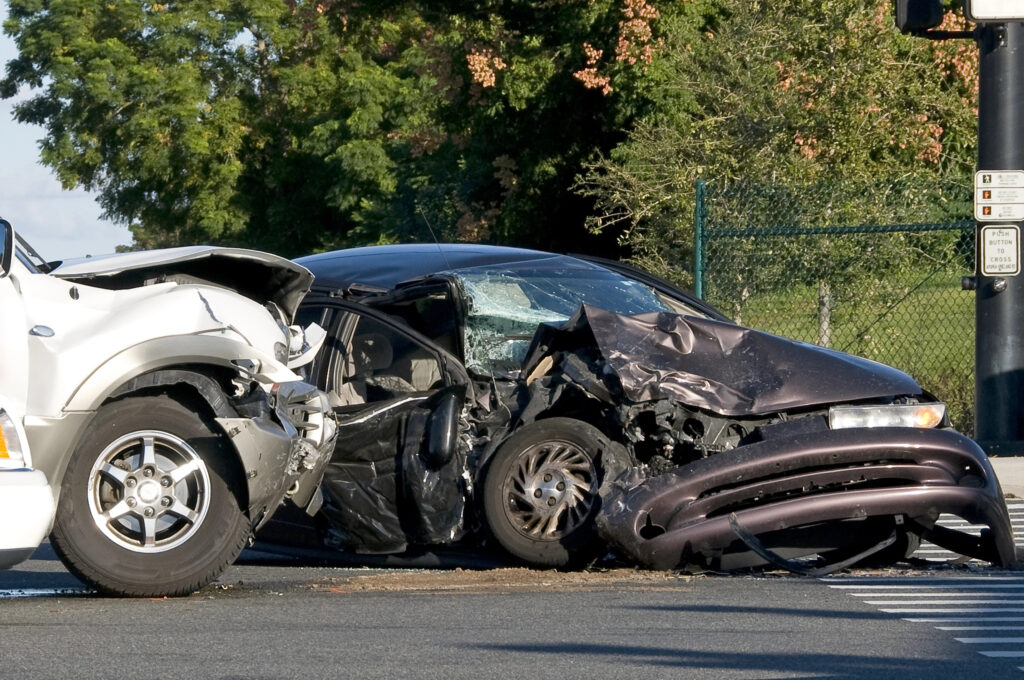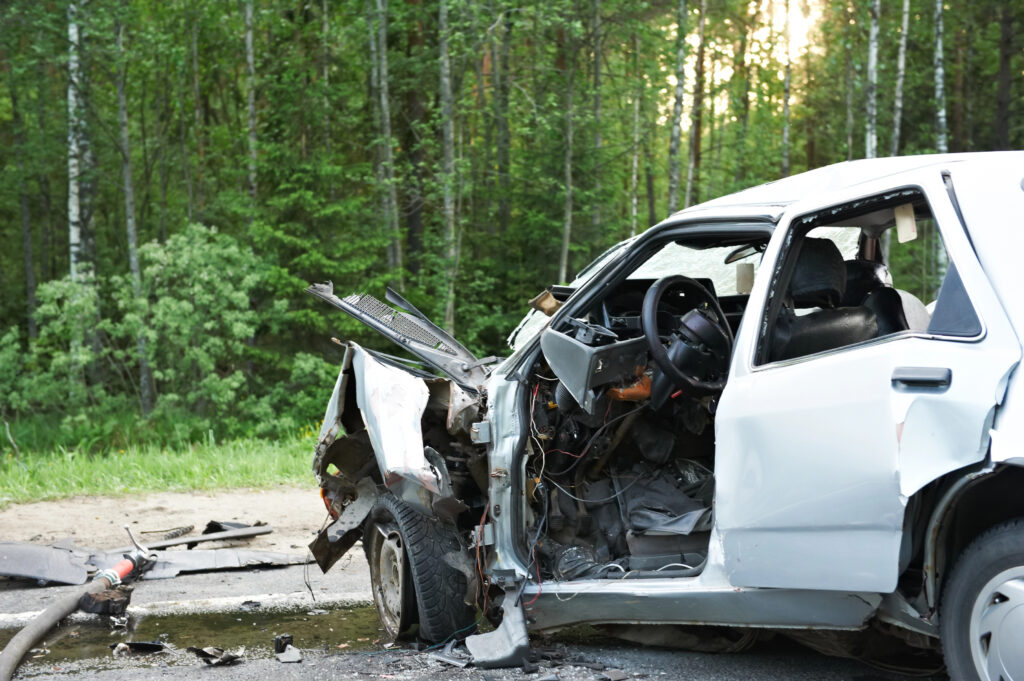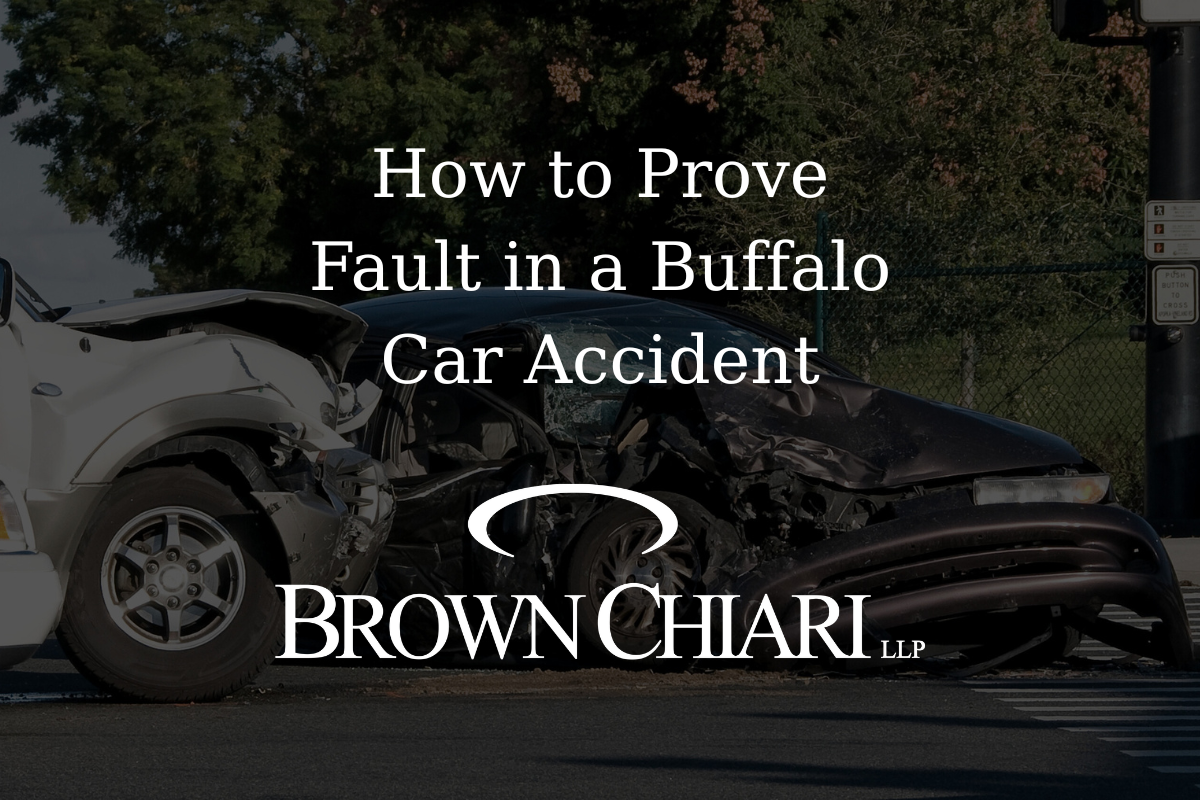If you’ve been involved in a car accident in Buffalo, NY, one of the first and most critical questions is: Who was at fault? Establishing fault is key to receiving fair compensation for your injuries, property damage, and other losses. But under New York’s no-fault system and comparative negligence rules, determining fault isn’t always straightforward.
Whether you’re dealing with aggressive insurance adjusters, mounting medical expenses, or conflicting accounts of what happened, knowing how to prove fault can make a significant difference in your car accident case. At Brown Chiari LLP, our experienced legal professionals help clients through the entire process—from gathering evidence to pursuing a successful outcome in or out of court.

Understanding the Legal Landscape in Buffalo, NY
New York follows a no-fault insurance system, meaning your own insurance company typically covers initial medical expenses and lost wages regardless of who caused the accident. However, if you suffered serious injuries or your losses exceed certain thresholds, you may be eligible to file a personal injury lawsuit against the at-fault party.
In such a situation, proving fault becomes essential. Under the state’s comparative negligence system, more than one party can be held liable, and your compensation can be reduced in proportion to your share of fault.
Key Evidence Used to Prove Fault in a Buffalo Car Accident
Proving negligence involves building a compelling case through credible, detailed evidence. Here are the primary elements used in establishing fault:
1. Police Report
One of the most valuable tools in any car accident claim is the police report. Officers who respond to the scene will record essential information including:
- The parties involved
- Witness statements
- Observations of road and weather conditions
- Diagrams or descriptions of the accident scene
- Preliminary determination of fault
Obtaining the police report early can be crucial in guiding legal proceedings.
2. Medical Records and Expenses
Your medical records and bills are indispensable in showing the severity of the injuries sustained and how they relate directly to the accident. They also support claims for both economic and non-economic damages. Be sure to seek medical attention immediately following the accident and maintain ongoing documentation of all treatment.
3. Witness Statements
Gathering reliable witness statements helps clarify the events leading to the accident. Neutral third parties often provide unbiased accounts, which can strengthen your case when the other driver’s version of events is disputed.
Witness statements are especially useful when paired with photographic evidence from the accident scene.
4. Accident Scene Documentation
Photos of vehicle damage, skid marks, road signs, and the general layout of the accident scene provide visual support to your narrative. If possible, document the accident scene thoroughly and preserve any relevant evidence. Skid marks and the position of the vehicles can help in reconstructing what happened.
5. Accident Reconstruction Experts
In complex cases, especially those involving significant property damage or serious injuries, accident reconstruction experts may be needed to analyze data from the crash. They use science and technology to simulate how the accident occurred and who was likely at fault.
Steps to Take After a Buffalo Car Accident
To improve your chances of proving fault and protecting your rights:
- Seek medical attention right away to ensure your health and document any injuries.
- Contact the police and request an accident report.
- Gather evidence at the scene, including photos, videos, and witness contact information.
- Do not admit fault to the other driver or insurance company.
- Speak with a Buffalo car accident lawyer before giving recorded statements to insurance companies.
Why Insurance Companies Fight Fault
Insurance companies have a vested interest in minimizing payouts. They may dispute your claim, delay settlement offers, or argue that your injuries were pre-existing. Their adjusters may also twist statements or selectively interpret accident reports to reduce your compensation.
Having an experienced attorney on your side ensures you have someone protecting your interests throughout the legal process. At Brown Chiari LLP, we handle negotiations with insurance companies and advocate for maximum compensation for accident victims.

Filing a Car Accident Claim or Lawsuit
If negotiations fail or the other driver’s insurer refuses to accept liability, your Buffalo car accident attorney may recommend filing a personal injury lawsuit. Legal representation is particularly crucial at this stage to ensure your case meets all procedural requirements and deadlines.
We help clients throughout Buffalo NY file car accident claims, prepare for court proceedings, and understand the legal aspects of pursuing a case—from accident reports to preserving evidence for trial.
Learn more about how to prove fault in a Buffalo car accident. Call Brown Chiari LLP at (716) 681-7190 to schedule your free, no-obligation consultation. You can also reach us anytime through our contact page. Let us help you take the first step toward justice and recovery.
FAQs: How to Prove Fault in a Buffalo Car Accident
What evidence is most important for proving fault in a car accident case?
Police reports, medical records, witness statements, and photos from the accident scene are all key forms of evidence. Accident reconstruction experts may also be used in serious cases.
Can I still recover compensation if I was partially at fault?
Yes. Under New York’s comparative negligence system, you can still receive compensation even if you share some blame. Your compensation will be reduced based on your percentage of fault.
What role do insurance companies play in determining fault?
Insurance companies conduct their own investigations and often attempt to minimize their liability. It’s important not to rely solely on their findings and to have legal representation.
How soon should I contact a Buffalo car accident attorney after an accident?
As soon as possible. Early involvement allows your attorney to gather evidence, protect your rights, and manage communications with insurance adjusters.
What if the police report is inaccurate?
Your attorney can help challenge inaccurate information in a police report by gathering additional evidence, obtaining witness statements, or bringing in experts to support your version of events.
